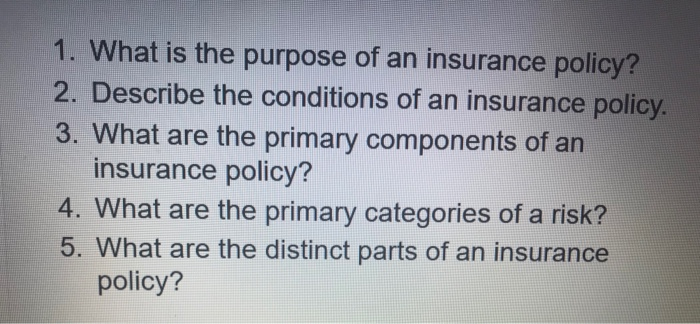Pacific Prime Can Be Fun For Anyone

This drop of almost 2 million in the variety of people 'without insurance policy (a decrease of about 4 percent) is certainly a positive change. With a softer economic climate in 2000 the current reported gains in insurance coverage may not proceed (Fronstin, 2001) (international health insurance). The decrease in the variety of uninsured will not continue if the economy continues to be slow-moving and wellness treatment expenses proceed to surpass rising cost of living
This is due to the fact that the data were collected for a duration of strong economic efficiency. Of the estimated 42 million people that were uninsured, just about concerning 420,000 (regarding 1 percent) were under 65 years of age, the age at which most Americans become qualified for Medicare; 32 million were adults between ages 18 and 65, about 19 percent of all grownups in this age; and 10 million were children under 18 years of age, about 13.9 percent of all youngsters (Mills, 2000).
These price quotes of the number of persons without insurance are created from the annual March Supplement to the Current Population Survey (CPS), conducted by the Census Bureau. Unless otherwise noted, nationwide quotes of individuals without medical insurance and proportions of the populace with various sort of insurance coverage are based upon the CPS, one of the most commonly used source of estimates of insurance policy coverage and uninsurance prices.
Little Known Questions About Pacific Prime.

Still, the CPS is especially valuable due to the fact that it generates annual quotes reasonably promptly, reporting the previous year's insurance policy coverage approximates each September, and since it is the basis for a regular collection of price quotes for even more than 20 years, permitting analysis of trends in insurance coverage over time. For these reasons, along with the extensive usage of the CPS in other studies of insurance policy coverage that exist in this report, we rely upon CPS quotes, with limitations kept in mind.

The price quote of the variety of uninsured individuals expands when a populace's insurance policy condition is tracked for numerous years. Over a three-year period starting early in 1993, 72 million people, 29 percent of the U.S. https://fliphtml5.com/homepage/odsej/pacificpr1me/. population, lacked coverage for a minimum of one month. Within a single year (1994 ), 53 million people experienced a minimum of a month without protection (Bennefield, 1998a)
Six out of every 10 uninsured grownups are themselves employed. Functioning does improve the possibility that one and one's household members will have insurance coverage, it is not a warranty. Even participants of families with 2 full time wage earners have virtually a one-in-ten possibility of being uninsured (9.1 percent uninsured rate) (Hoffman and Pohl, 2000).
Getting The Pacific Prime To Work
New immigrants represent a significant percentage of people without wellness insurance. One evaluation has attributed a significant part of the current growth in the dimension of the united state without insurance populace to immigrants who showed up in the nation between 1994 and 1998 (Camarota and Edwards, 2000). Recent immigrants (those that came to the United States within the past 4 years) do have a high go price of being without insurance (46 percent), however they and their kids represent simply 6 percent of those without insurance policy nationally (Holahan et al., 2001).
The partnership between medical insurance and accessibility to care is well developed, as documented later in this chapter. The partnership between wellness insurance coverage and health and wellness results is neither direct neither simple, a substantial professional and health and wellness services study literary works links health insurance policy protection to better access to care, far better high quality, and enhanced personal and populace health and wellness status.
Degrees of evaluation for analyzing the effects of uninsurance. This conversation of medical insurance protection focuses largely on the U.S. populace under age 65 because basically all Americans 65 and older have Medicare or other public coverage. It concentrates particularly on those without any wellness insurance coverage for any kind of size of time.
Pacific Prime Things To Know Before You Get This
The problems encountered by the underinsured are in some aspects similar to those faced by the without insurance, although they are normally less extreme. Health and wellness insurance, however, is neither required neither enough to get access to medical services. The independent and direct result of health insurance policy protection on access to health and wellness solutions is well established.
Others will certainly obtain the healthcare they need even without health insurance, by paying for it expense or seeking it from providers who supply treatment complimentary or at very subsidized rates. For still others, medical insurance alone does not ensure invoice of treatment since of various other nonfinancial barriers, such as an absence of healthcare companies in their area, restricted access to transport, illiteracy, or linguistic and cultural differences.
The Basic Principles Of Pacific Prime
Formal study concerning uninsured populations in the USA dates to the late 1920s and early 1930s when the Board on the Cost of Healthcare generated a series of records regarding funding physician workplace gos to and hospitalizations. This concern ended up being prominent as the numbers of clinically indigent climbed throughout the Great Clinical depression.
Comments on “The Single Strategy To Use For Pacific Prime”